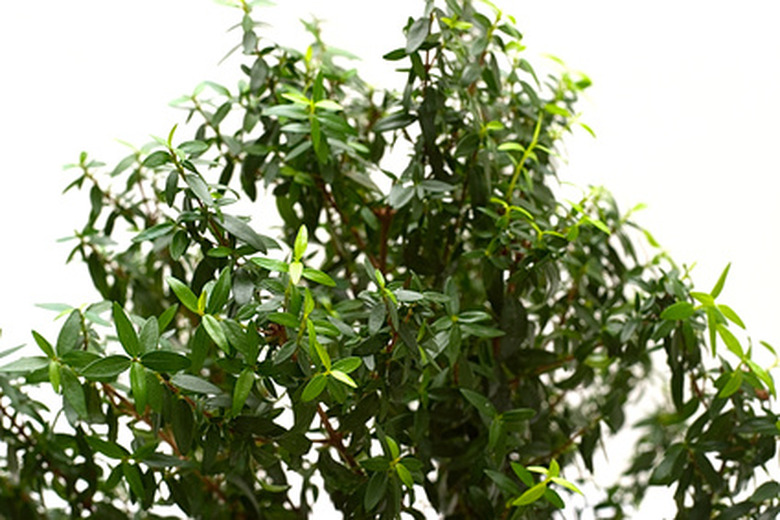Shrubs Of The Northeast
Many gardeners in the northeastern United States must contend with severe winters, hot, high-humidity summers, and soil almost too thin to cover the stones it contains. Finding shrubs that perform in such conditions, however, doesn't need to be a challenge. Dozens of evergreen and deciduous shrubs are native to the northeast. They offer gardeners attractive blooms, fragrance and autumn color. They also supply food and shelter for the region's wildlife.
Bayberry
Bayberry (Myrica pensylvanica) is a round, 6- to 10-foot shrub native to the New England states, New York and Pennsylvania. Its dense branches have glossy, greenish-gray, lance-like leaves. Bayberry's crushed foliage is pleasantly aromatic. It's tolerant of salt spray and winter road salt. Both male and female plants have inconspicuous flowers from July to October. Pollinated female plants produce small, waxy gray berries. Often remaining on the bushes through the winter, the berries are a food source for birds. The berries' waxy coating, says the Missouri Botanical Garden, is an ingredient in soaps and candles.
- Many gardeners in the northeastern United States must contend with severe winters, hot, high-humidity summers, and soil almost too thin to cover the stones it contains.
While bayberry tolerates drought, wind, and infertile wet locations, it does best in moist, acidic (pH below 7.0), sandy or peaty soil. It is impressive when planted in groups as a privacy or border hedge. Bayberry's colonizing habit makes it a good choice for slope erosion control.
Northern Spicebush
Filling the northeastern woodlands with yellow in the early spring, northern spicebush (Lindera benzoin) is a 6- to 12-foot laurel family shrub. Its thin pale green branches have oval leaves with deep-green surfaces and lighter undersides. Heavy clusters of pale-yellow flowers precede the leaves in April. Northern spicebush also has bright-red berries that make a fragrant spice when dried and powdered, says the Lady Bird Johnson Wildflower Center. The aromatic leaves provide yellow autumn color. Use them with the twigs to make tea. Plant northern spicebush in sun to shade and moist, well-drained sandy or loamy soil. Bushes receiving sun produce more flowers and berries on a denser bush.
- While bayberry tolerates drought, wind, and infertile wet locations, it does best in moist, acidic (pH below 7.0), sandy or peaty soil.
- Filling the northeastern woodlands with yellow in the early spring, northern spicebush (Lindera benzoin) is a 6- to 12-foot laurel family shrub.
Labrador Tea
Evergreen Labrador tea (Ledum groenlandicum) is a low shrub of northeastern peat bogs and wet woods. Standing up to 3 feet high, it has erect spreading branches with coppery, cracked bark. Glossy, aromatic elliptical green leaves have downy brown undersides. Between May and August labrador tea has flat clusters of bell-shaped, white blooms. Plant the flood-tolerant shrub in sun to shade and moist or wet, acidic peaty soil. Note that ingesting any part of this plant is toxic.
